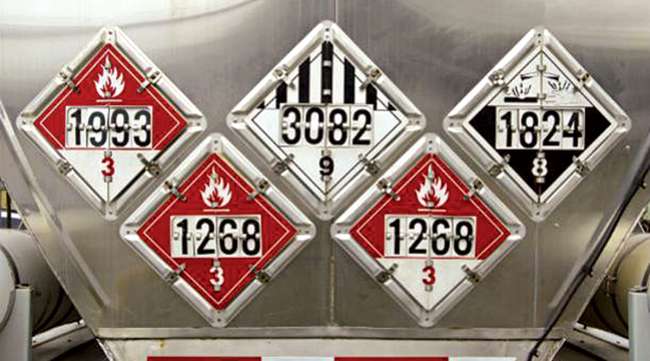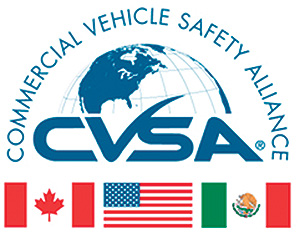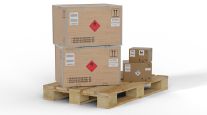Senior Reporter
North American 'Road Blitz' Puts 683 Hazmat Trucks Out of Service

[Stay on top of transportation news: Get TTNews in your inbox.]
For the first time, the United States and Mexico joined Canada in a weeklong hazardous materials “road blitz” enforcement event, placing more than 7.4% of trucks inspected out-of-service for transportation of dangerous goods or hazmat violations, the Commercial Vehicle Safety Alliance said on Oct. 29.
During the North America-wide event, Aug. 12-16, enforcement personnel in the three nations inspected a total of 9,259 commercial motor vehicles transporting hazmat, identifying 683 trucks with out-of-service hazmat or dangerous goods conditions.
CVSA inspectors found 66 violations for package integrity (leaking) and 204 violations for loading and securement, all resulting in out-of-service conditions. There were 181 other packaging violations, resulting in 50 out-of-service conditions. Of the 432 total placarding violations, 102 were out-of-service conditions.
In addition, inspectors found 1,156 shipping paper violations, 226 were out-of-service conditions, and out of 171 markings violations, 35 were out-of-service conditions.

Since 2012, Transport Canada and CVSA member jurisdictions in Canada have convened the annual weeklong enforcement blitz to conduct inspections and verify compliance with Canada regulations.
This year, however, was the first time that the United States and Mexico joined Canada in this initiative focused on the inspections, regulatory compliance and regulations enforcement.
CVSA said the event was intended to heighten awareness of the rules and regulations to keep the public and the environment safe from hazmat during transportation.
“Every day, hazardous materials are being shipped throughout North America,” said CVSA President Sgt. John Samis with the Delaware State Police. “Such materials are often necessary for people’s way of life; however, these materials can also be dangerous and without proper care, rules and regulations, there is the potential to endanger human life and damage the environment.”
The materials transported by commercial motor vehicles that include such Class 1 explosives as ammunition, fireworks and flares, were inspected 262 times.
Class 3 flammable liquids such as paints, gasoline, ethanol, methanol and some pesticides, were inspected 5,446 times — by far the most frequently inspected hazmat materials during this year’s road blitz.
Class 7 radioactive materials such as cobalt and cesium were inspected 87 times, CVSA said.
As a combined North American initiative, this year’s event allowed enforcement partners across national borders to foster North America-wide uniformity of enforcement activities and gather and share valuable compliance and enforcement information.
“Road inspectors check this type of transportation throughout the year,” Marie-Josée Michaud, spokesman for Contrôle routier Québec, said in a recent statement.
“We have several operations throughout the year targeting different types of transportation,” Michaud added. “The transportation of hazardous materials is not among the most delinquent. However, this type of transportation must be well supervised, because an incident can often have greater consequences [compared to] a vehicle carrying general merchandise.”
Want more news? Listen to today's daily briefing:




